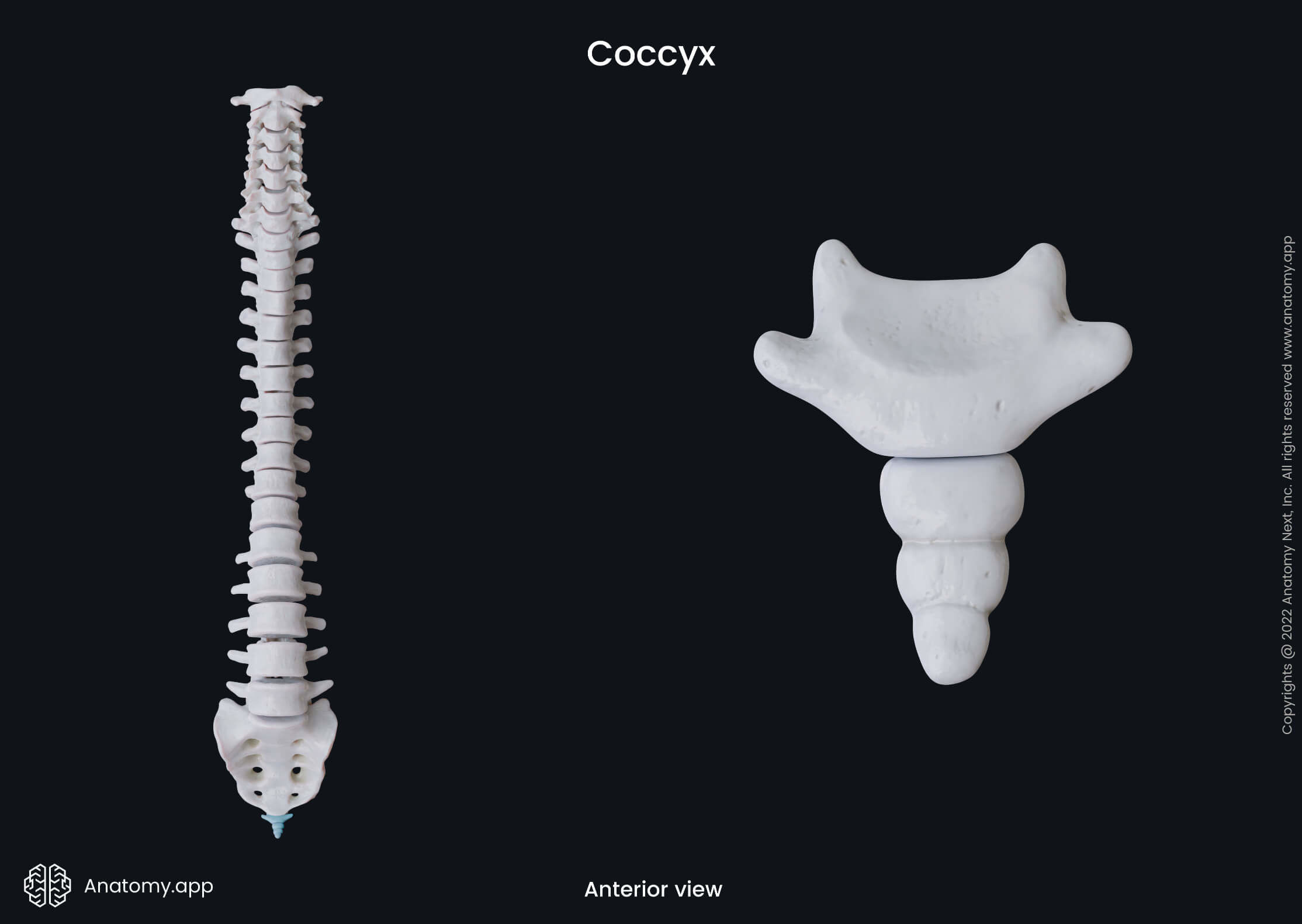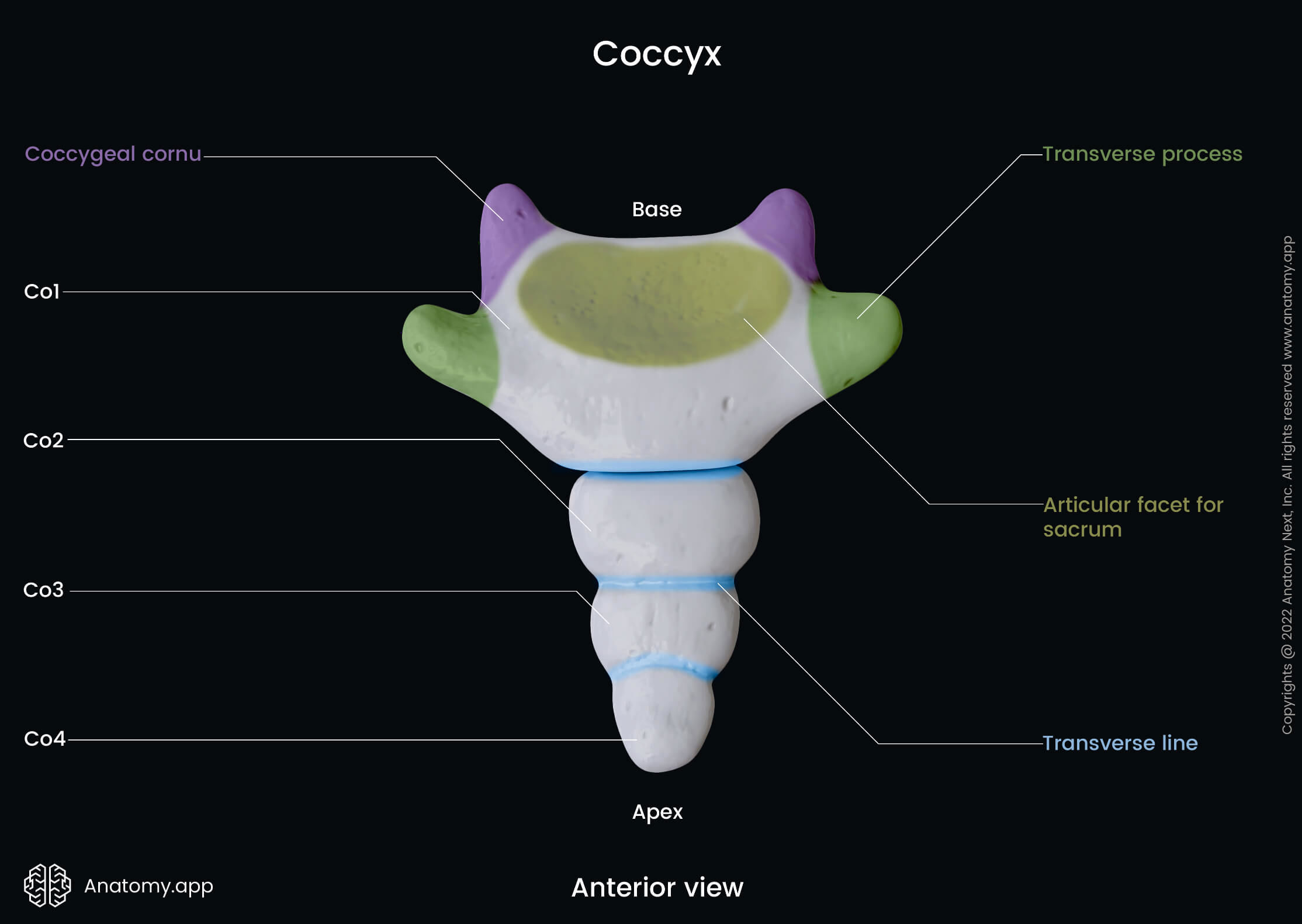- Anatomical terminology
- Skeletal system
- Joints
- Muscles
- Heart
- Blood vessels
- Lymphatic system
- Nervous system
- Respiratory system
- Digestive system
- Urinary system
- Female reproductive system
- Male reproductive system
- Endocrine glands
- Eye
- Ear
Coccyx
The coccyx (Latin: os coccygis), also known as the tailbone, is the final part of the vertebral column consisting of three to five rudimentary vertebrae. It is located below the sacrum, and both bones are connected by the sacrococcygeal symphysis.

The coccyx of an adult usually presents as a single bone formed by three, four or five fused vertebrae that lack the vertebral arches. However, the appearance and size of the coccyx vary, and it may consist of two to five separate bony segments.
The coccyx is a triangular-shaped bone with its base facing the sacrum while its apex is facing downward. Each side of the base contains a coccygeal cornu (horn) - a rudimentary superior articular process projecting upward from the base. The base of the coccyx presents with one articular facet. Also, the first coccygeal vertebra has two transverse processes.

